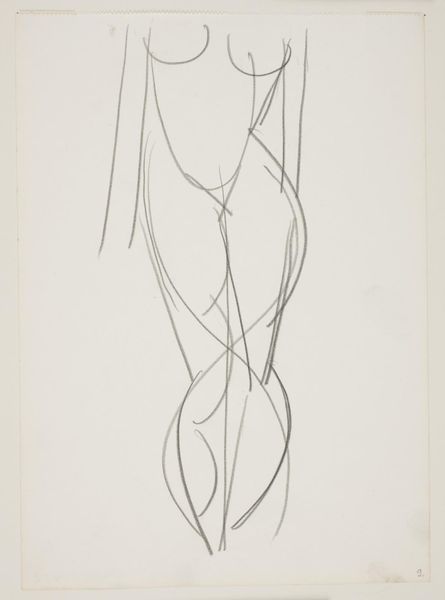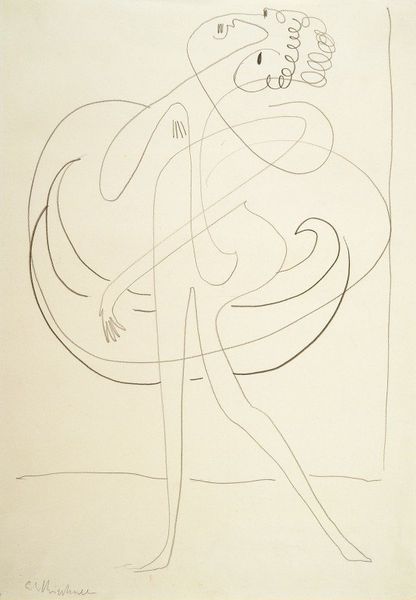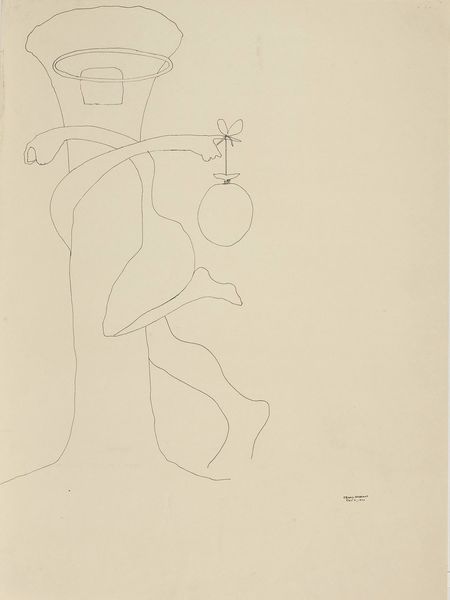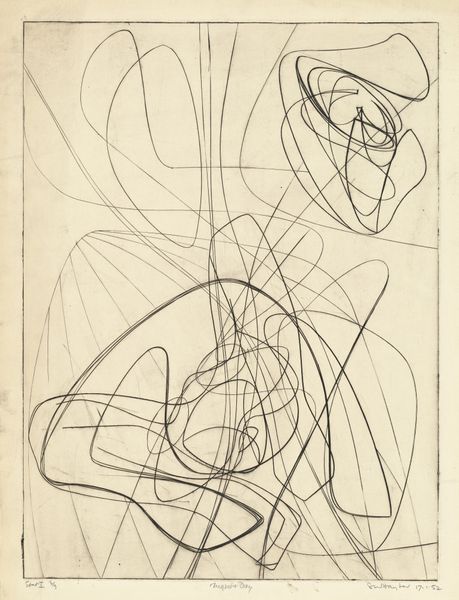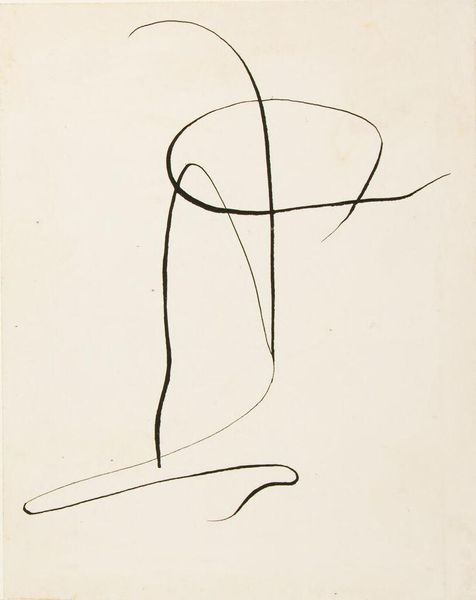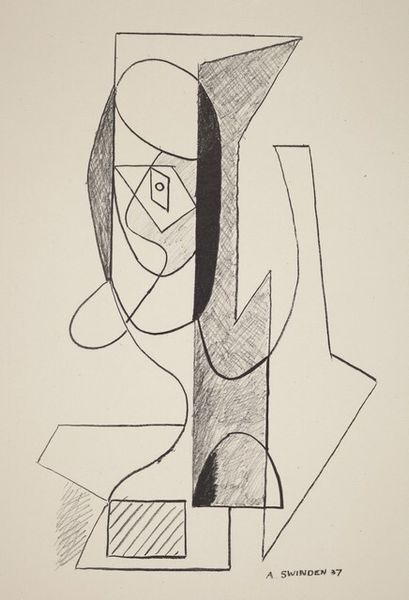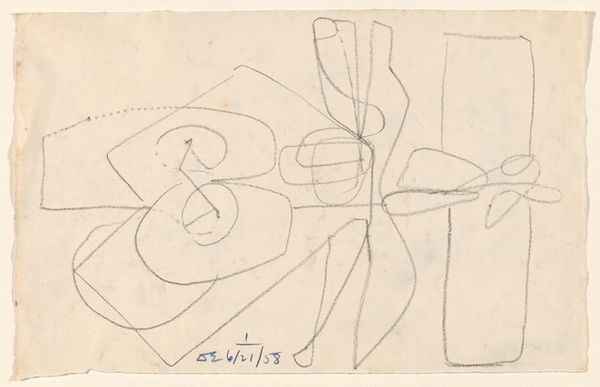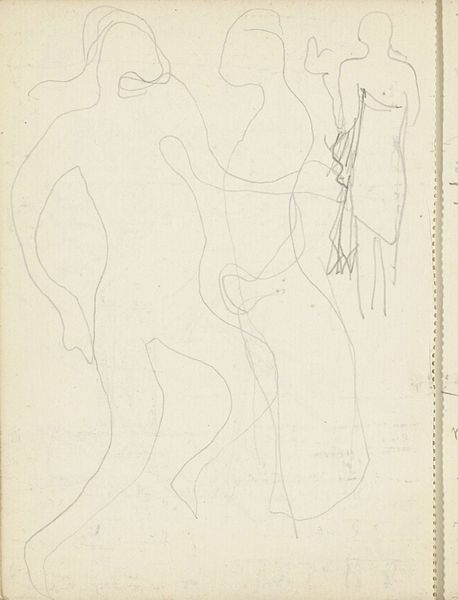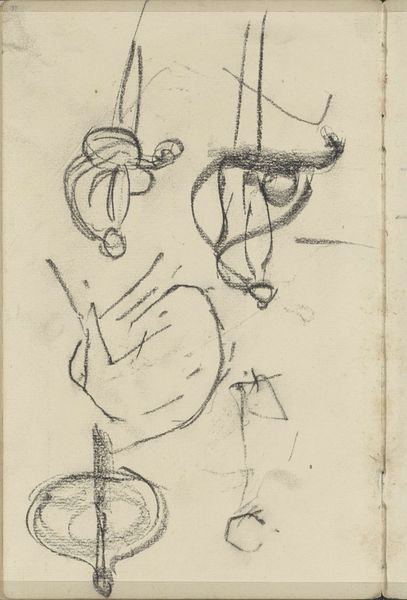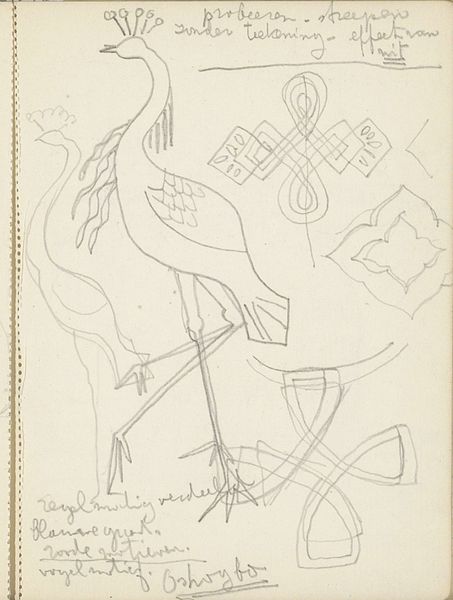
drawing, ink
#
drawing
#
constructivism
#
abstract
#
form
#
ink
#
geometric
#
line
#
modernism
Copyright: Public Domain: Artvee
Editor: Here we have László Moholy-Nagy's "Bennett Sculpture" from 1943, rendered in ink. The geometric forms sketched out give me a sense of floating, an ethereal blueprint perhaps. How do you interpret this work? Curator: Well, seeing these shapes, it immediately reminds me of the Constructivist movement and its exploration of pure form, line, and space, but do you notice anything else about the geometric components? Are these perfect shapes or slightly off-kilter, organic almost? The subtle imbalance evokes a kind of dynamism, reflecting the rapid industrial and technological changes of the early to mid-20th century. It feels as though Moholy-Nagy is speaking about the world through these symbols. Editor: That's a great point. The forms are not precise; they seem hand-drawn, revealing the artist’s touch. So you’re saying that even in abstraction, there’s an intentional message about industrial progress through those somewhat wonky geometries? Curator: Precisely. Look at the intersecting lines—don’t they suggest a building? Or even pathways, future structures, still in flux? Perhaps a subtle commentary on the uncertainties of progress in a time of war, reflected in those not-quite-perfect lines. This is a sculpture that hasn’t quite manifested yet. Editor: That resonates—this piece, though abstract, is so much about the cultural mood surrounding the Second World War! Curator: Yes, exactly. And considering that he created it while in exile, maybe those floating, not-yet-defined forms become symbolic of the possibilities held in diasporic experiences. What seemed abstract becomes incredibly profound! Editor: I see it now. Thank you so much; this makes me look at Modernism in a totally different light. Curator: Indeed, sometimes, art uses symbolic abstractions to communicate beyond explicit narratives and overt propaganda. Always look beneath the surface.
Comments
No comments
Be the first to comment and join the conversation on the ultimate creative platform.

